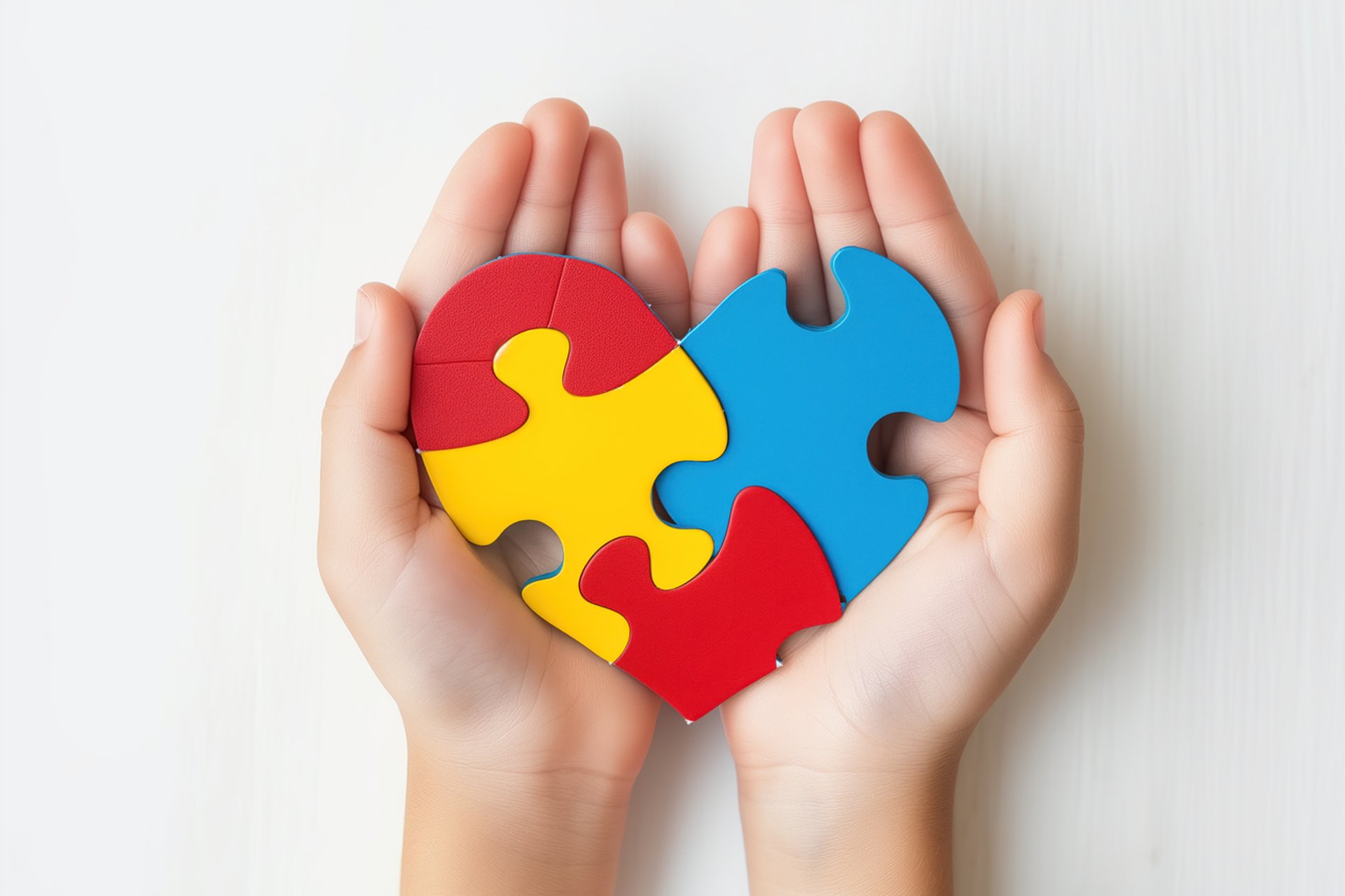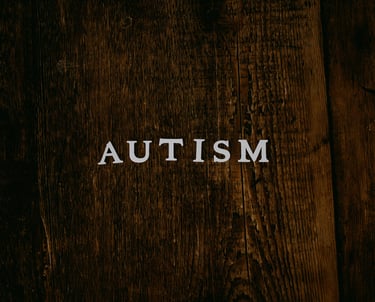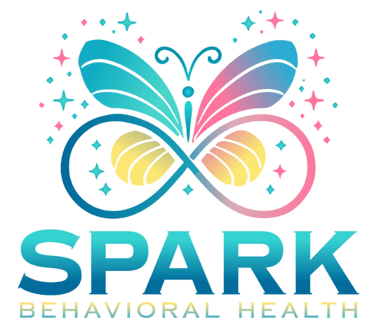
What Is ABA Therapy and How Does It Work?
Understand ABA therapy for autism, its benefits, techniques, and how it can help your child communicate, learn, and thrive in a structured, supportive environment.
ABA THERAPY AND SERVICES
Timnit Yikealo
To Understand ABA therapy for autism, its benefits, techniques, and how it can help your child communicate, learn, and thrive in a structured, supportive environment.


Being a parent it's normal to feel worried if your child has recently been diagnosed with autism. And as there are many options it’s OK to feel overwhelmed by the options available. Among these many therapies one therapy you’ll most likely hear more about is ABA therapy. This therapy stands for Applied Behavior Analysis. In this article we have broken down:
What ABA therapy is?
How does this therapy work?
Why is it one of the most trusted and widely recommended approaches for children with autism?
After reading this detailed breakdown we are sure you will have a clear understanding of how ABA works, its science-backed effectiveness, and how it might help your child thrive.
What Is ABA Therapy?
Applied Behavior Analysis, or ABA, is a therapy that’s all about understanding behavior and helping kids thrive. It uses proven techniques from behavioral psychology to teach important life skills and reduce challenging behaviors. The idea is simple: encourage positive habits like better communication and social skills, while gently reducing things like tantrums or aggression.
It has been tested in scientific studies and has shown success in helping children with autism. This therapy has been the gold-standard treatment for autism since the 1960s and is recommended by leading health organizations like the U.S. Surgeon General and American Psychological Association. Leading health organizations, including the U.S. Surgeon General and the American Psychological Association, recommend it because it works.
The Science Behind ABA Therapy
ABA, or Applied Behavior Analysis, is all about helping kids learn and grow by understanding how behavior works. This therapy is not a new trend; it's been around for decades and has a ton of research behind it as we described above. This approach goes way back to early behavior research. Researchers like B.F. Skinner discovered that positive outcomes encourage good behavior to stick. Today’s ABA builds on that idea, but with one major update it’s all positive. No punishment. Just strategies that work and feel good for your child.
Therapists often look at the ABCs: Antecedent, Behavior, Consequence. Basically, what happened before the behavior, what the behavior was, and what happened after. For example your child throws a toy when you tell them to stop playing. The therapist doesn’t just focus on the throwing. They dig deeper. Why did it happen? Then they teach a better way to respond, like saying, “Can I have a break?” Over time, these little changes add up to big progress.
How Does ABA Therapy Work?
ABA therapy follows a structured process designed to meet the unique needs of each child. Here's a simple breakdown:
Assessment
Everything starts with a thorough evaluation by a Board-Certified Behavior Analyst (BCBA). They’ll spend time getting to know your child—observing, asking questions, and understanding both strengths and challenges. Your input as a parent matters a lot here because you know your child best. This step sets the foundation for a plan that truly fits your child.
Treatment Plan Creation
Next, the BCBA designs a plan tailored to your child’s goals. These could include improving communication, building social skills, or reducing behaviors that make daily life harder. Each goal is broken down into small, manageable steps so your child can experience success along the way.
Therapy Sessions
Now comes the fun part—therapy sessions! These can happen at home, in school, or in a clinic. Sessions aren’t about drills and worksheets; they often feel like play. The therapist uses activities your child enjoys to keep them engaged while learning. It’s structured, but it’s also enjoyable, which makes a big difference in how kids respond.
Tracking and Progress Monitoring
ABA is very results-focused. During every session, the therapist records data—tracking what’s working and what’s not. This information helps the BCBA tweak the plan when needed so your child keeps moving forward.
Generalization and Maintenance
Learning a skill in therapy is one thing. Using it outside of therapy is another. ABA makes sure new skills stick by practicing them in real-life settings—like greeting a friend at the park or sharing during family playtime. Parents often join in this step to help reinforce progress at home.
Key ABA Therapy Techniques and Principles
ABA therapy uses a variety of techniques tailored to your child’s needs. Some of the key principles include:
Positive Reinforcement
This is the first outcome of ABA. When your child shows a desired behavior, he/she will be immediately rewarded with praise or something they enjoy, this behavior encourages them to repeat the behavior and ultimately positive behavior building.
Prompting and Fading
You can take these prompts as simply gentle reminders or hints that help your child complete a task or learn a new skill. At first, they might need a lot of guidance, but as they get the hang of it, those prompts slowly fade away. The ultimate goal is for your child to do it confidently and independently without any extra help.
Task Analysis
In this therapy your kids therapist takes big, complicated tasks and breaks them into small, manageable steps. This makes learning so much easier for your child. For example, when teaching hand-washing, instead of saying “Go wash your hands,” we teach each step separately: turning on the faucet, getting soap, scrubbing, rinsing, and drying. Completing and learning one step at a time helps your child feel successful and builds confidence along the way.
Modeling
Children often learn by watching others, it is natural behavior. In ABA, therapists model behaviors and encourage children to repeat after them. Whether your kid is learning how to greet someone or how to share, this method helps children understand what is expected of them.
Discrete Trial Training (DTT)
This is a structured teaching method where the therapist provides a clear instruction, the child responds, and the therapist gives immediate feedback. This technique is most effective for teaching specific skills in a systematic and repetitive way.
Natural Environment Teaching (NET)
In contrast to DTT, NET focuses on teaching skills in real-life, natural settings. For instance, if your child enjoys playing with bubbles, the therapist might prompt them to request “bubbles” before rewarding them with a bubble session.
Individualized Care
ABA therapy is not a one-size-fits-all approach. Every child is unique, and ABA is designed to meet each child’s specific needs. Your BCBA will customize the program based on your child’s strengths, challenges, and learning style. This individualized approach ensures that your child receives the most effective therapy possible, at a pace that suits them.
The therapy plan is also family-centered, meaning that it takes your family’s routines, values, and preferences into account. This makes the therapy not only effective but sustainable in your everyday life.
Common Myths and Questions About ABA Therapy
There are many myths surrounding ABA therapy. Here are some common misconceptions and the truth behind them:
Myth: “ABA therapy will make my child robotic.”
Fact: ABA therapy is about teaching your child essential skills, not changing their personality. It’s designed to increase engagement, spontaneity, and communication not to make your child behave unnaturally.Myth: “ABA is just bribery.”
Fact: Reinforcement is used to encourage positive behaviors, but it’s not about bribing your child. It’s a structured and thoughtful approach to motivation, with rewards as per your child’s interests.Myth: “ABA uses punishment to deal with bad behaviors.”
Fact: Modern ABA focuses on positive reinforcement, not punishment. It’s about teaching your child better ways to cope with frustration, not using aversive techniques.
What Can ABA Do for Your Child?
What every parent like you wants is for their child to feel understood, confident, and happy. That’s exactly what ABA works toward. Here’s how it can make a difference in everyday life:
Better Communication: Ever wish your child could just tell you what they need without the tears or guesswork? ABA helps with teaching ways to express feelings and understand others so conversations feel less stressful and more natural.
Social Behavior: Things like sharing toys or joining a family game night don’t happen overnight. But with ABA, kids pick up those little skills like taking turns or saying “hi” that make friendships easier and more fun.
Calm Behavior: Big emotions can be overwhelming for everyone. ABA gives kids tools to handle frustration in a better way, so instead of a meltdown, they might say, “I need a break.” That’s a huge win.
Everyday independence: Brushing teeth, putting on socks, going to the bathroom on their own these seem small, but they’re life-changing for your child (and honestly, for you too).
Confidence in learning: School gets easier when kids can focus, follow steps, and solve problems. ABA builds those skills one step at a time, so your child can feel proud of what they achieve.
Final thoughts
Choosing ABA therapy for your child is an important decision, and we are here to help and guide you through the process. If you’re residing in Portland or anywhere in Oregon, consider booking a consultation with one of our expert ABA therapists. There’s no pressure to commit, just an opportunity to learn more about how ABA therapy can help your child thrive.
We’re here to support you, whether you’re ready to begin therapy or just looking for more information. Reach out today to get started on this exciting journey of growth and learning for your child.
Receive the latest news in your email
Recent Posts


